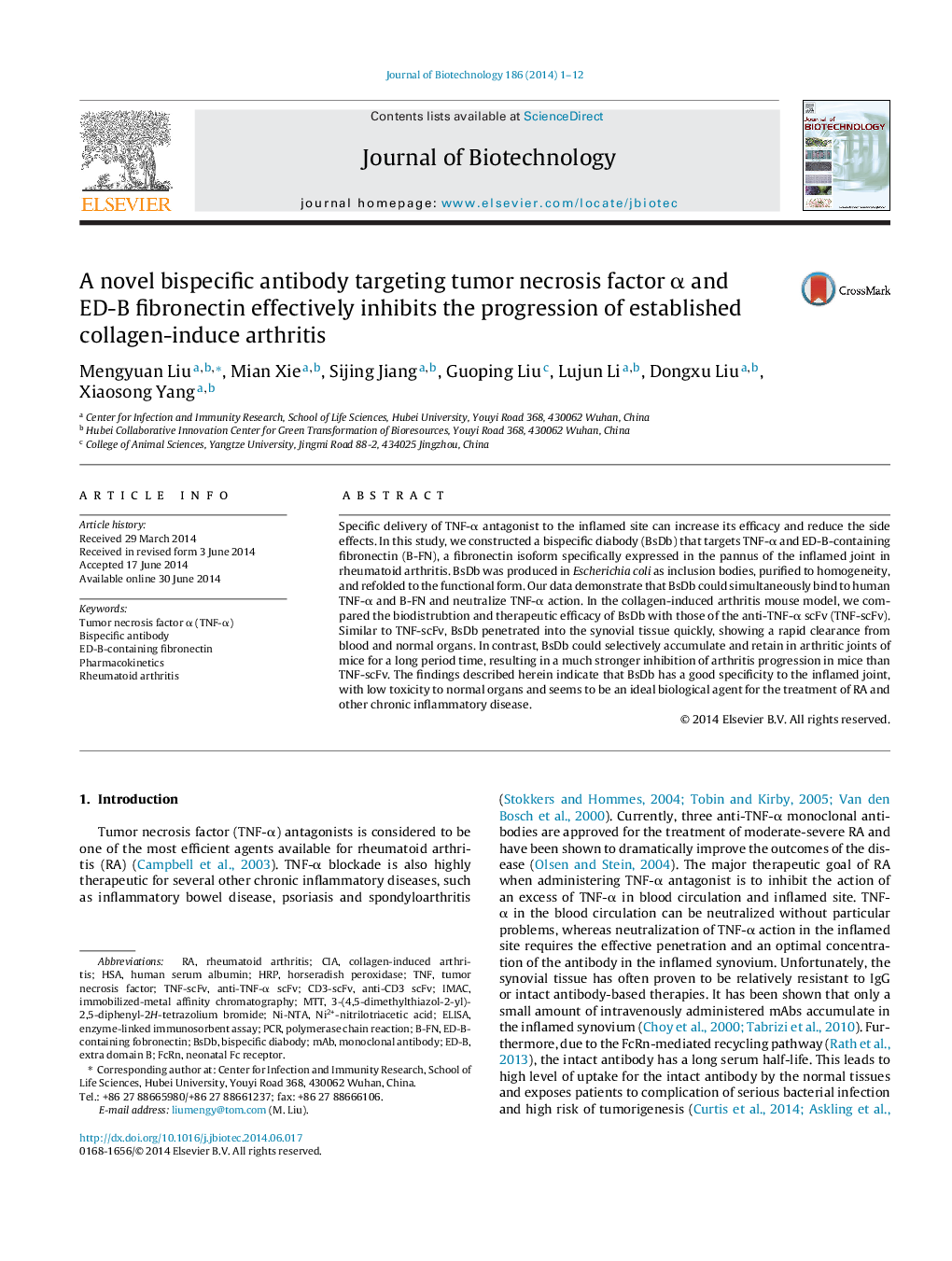| Article ID | Journal | Published Year | Pages | File Type |
|---|---|---|---|---|
| 6491451 | Journal of Biotechnology | 2014 | 12 Pages |
Abstract
Specific delivery of TNF-α antagonist to the inflamed site can increase its efficacy and reduce the side effects. In this study, we constructed a bispecific diabody (BsDb) that targets TNF-α and ED-B-containing fibronectin (B-FN), a fibronectin isoform specifically expressed in the pannus of the inflamed joint in rheumatoid arthritis. BsDb was produced in Escherichia coli as inclusion bodies, purified to homogeneity, and refolded to the functional form. Our data demonstrate that BsDb could simultaneously bind to human TNF-α and B-FN and neutralize TNF-α action. In the collagen-induced arthritis mouse model, we compared the biodistrubtion and therapeutic efficacy of BsDb with those of the anti-TNF-α scFv (TNF-scFv). Similar to TNF-scFv, BsDb penetrated into the synovial tissue quickly, showing a rapid clearance from blood and normal organs. In contrast, BsDb could selectively accumulate and retain in arthritic joints of mice for a long period time, resulting in a much stronger inhibition of arthritis progression in mice than TNF-scFv. The findings described herein indicate that BsDb has a good specificity to the inflamed joint, with low toxicity to normal organs and seems to be an ideal biological agent for the treatment of RA and other chronic inflammatory disease.
Keywords
ED-Btumor necrosis factor α (TNF-α)3-(4,5-dimethylthiazol-2-yl)-2,5-diphenyl-2H-tetrazolium bromideTNFNi-NTAextra domain BmAbFcRnIMACHSAHRPMTTcollagen-induced arthritisRheumatoid arthritishuman serum albuminMonoclonal antibodybispecific antibodyEnzyme-linked immunosorbent assayELISABispecific diabodyCIAPharmacokineticstumor necrosis factorpolymerase chain reactionPCRHorseradish peroxidaseImmobilized-metal affinity chromatographyneonatal Fc receptor
Related Topics
Physical Sciences and Engineering
Chemical Engineering
Bioengineering
Authors
Mengyuan Liu, Mian Xie, Sijing Jiang, Guoping Liu, Lujun Li, Dongxu Liu, Xiaosong Yang,
